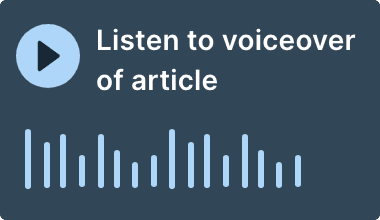In the world of healthcare, there are few companies that elicit such strong reactions from investors and the public as Novo Nordisk and its breakthrough weight loss drug, Wegovy (or its equivalent Ozempic for the treatment of diabetes). As is increasingly common, the market had boiled the entire investment case down to a simple narrative: Novo Nordisk was the undisputed leader in weight loss medication with the most effective product in a market primed to take off and the share price reacted accordingly. However, as their leadership started to become challenged by more products achieving apparently comparable results the narrative no longer applied, and the stock sunk.
The difficulty with narratives is they oversimplify the complex dynamics that govern the ability of a business to generate sustainable returns. Worse, they sometimes reduce multiple competing considerations down to one or two simple measurable metrics. In the pharma space, drug efficacy is one of the most used proxies for future growth. Yet the companies who achieve success in the obesity market will require much more than effective drugs. And we also must remember that, despite what the market thinks, this is unlikely to be a simple winner-takes-all market. So while it may have seemed alarming to see Novo’s share price fall as much as it did in the second half of last year, we remain confident in their ability to remain at the centre of this rapidly expanding market.
The rise and fall of drug efficacy
Only twelve months ago, the market was brimming with optimism towards Novo Nordisk on the basis of the efficacy of its Ozempic for weight loss indications. As everyone is well aware by now, obesity is one of the greatest health problems that governments face around the world, affecting more than 813 million people1 globally and associated with over 200 health complications, like diabetes. It is calculated to be associated with costs of over ~3 per cent of GDP and for being responsible for more than 8 per cent of the average governmental healthcare budget. The opportunity for companies treating this disease is enormous, especially for those, like Novo, that looked like they would dominate it. As more competing products emerged with similarly high levels of efficacy, Novo’s share price fell from record highs. This culminated with the steep sell off in December following the underwhelming REDIFINE-1 trial results for its third-generation obesity drug, Cagrisema. On the day of the results, the stock fell as much as -29 per cent (closing down -21 per cent) on the basis of a lower-than-expected weight loss result (22.7 per cent versus an expectation of 25 per cent) and questions surrounding tolerability2, even though this was still ahead of its main competitor, Eli Lilly’s Zepbound. This was a severe rout, equivalent to one fifth of the value of the business going up in smoke.
The market’s sharp reaction—amplified by high expectations—appears exaggerated. A failed trial may have justified such a significant stock price drop, but slightly lower-than-expected efficacy does not warrant such a negative response. In a way Novo’s shares have become a victim of their own success. The narrative that said Novo would dominate because of the most effective products has now turned on its head.
More than effective
Getting an effective drug through clinical trials and to market is a long and laborious process that can often take ten years or more. But achieving commercial success in such a large market as obesity requires many more attributes. Novo scores highly on many of these and has an advantage over most of their peers. First, you need to have the capacity to produce the scale of product that is in demand, and to be able to do so in a cost-effective manner. Novo’s already outstanding manufacturing capacity has been bolstered by the clearance of the Catalent 3deal by the regulatory authorities. It will take some of their smaller competitors many years to ramp up capacity to get to anywhere near the same scale as Novo.
Second, you need to have a distribution network to get the drug out to the millions of patients around the world. This means having strong relationships with hospitals and healthcare institutions so that you can get the drug onto hospital formularies and it can be prescribed. In their largest market, the US, Novo’s strong sales and marketing spend boosts demand from end patients. And in developing markets they already have the network in place from distributing diabetes products such as insulin over the past decades.
You also need to have a strong pipeline of new drugs, with different delivery mechanisms (oral, injectables) to help access different markets and to fend off competition as it emerges. For Novo, as these products come to the fore, they will be able to drop the price of their older products, making them more accessible to a greater cross section of the population.
While the results of Cagrisema’s trial introduce uncertainty about Novo’s long-term leadership of the market, they do not significantly alter the medium-term outlook. The obesity market presents an enormous opportunity, allowing multiple players (and multiple products) to achieve stellar growth.
What about the risks?
From a quality growth perspective, Novo Nordisk presents a nuanced investment case. While its strengths are clear, it operates in a sector fraught with risk. Pharma companies face an unusually high degree of binary outcomes due to the nature of drug discovery. Competition in pharma is also high as companies vie to constantly improve safety and efficacy. And all companies face disruption risk from the presence of cheaper generics and biosimilars that collapse profit pools on patent expirations. Indeed, for these reasons we usually do not invest in pharma companies.
Novo however presents a rare case because one of Novo’s key competitive advantages has traditionally resided in the deep understanding and focus on one area of disease treatment, diabetes. While this has now expanded to obesity and a handful of other related metabolic diseases, this still represents a much higher level of focus than most other large pharmaceutical companies. This has led to a powerful fly wheel of higher R&D hit rates and leading returns on R&D enabling further reinvestments and a deeper understanding of these diseases.
Yet this core advantage also poses another company-specific risk: namely their reliance on a single molecule, Semaglutide. While Semaglutide has been a blockbuster success, this dependence (which is expected to subside as other drugs in the pipeline come to the fore) makes the company vulnerable to an additional set of risks.
Quality as a tool for risk mitigation
The most important risk management practice we employ is the deep understanding we have of each company in the Seilern Universe and our framework for ensuring that each company meets our stringent Quality Growth hurdles.
Novo Nordisk tackles these hurdles with ease. The company is the clear leader in diabetes care, commanding over 30 per cent of the global diabetes market by value. This expertise in diabetes care led to their development of the molecule now used to treat obesity. Their unique focus on R&D that targets chronic metabolic diseases famously led to the creation of liraglutide4 in 1997, which took another 17 years to receive approval by the FDA.
Moreover, Novo Nordisk is an excellent example of a company that drives growth organically as they predominantly develop therapies in-house. As a result, goodwill as a percentage of total assets is only 2 per cent, which is unheard of in pharma businesses. Finally, as we have mentioned, it has a global, reliable, and cost-effective manufacturing footprint which would be very costly and difficult to replicate, and it has a very strong and effective global sales team with long-established relationships with payers and endocrinologists that strengthens their competitive position.
The sum of all of these advantages is strong growth, with a ten-year revenue CAGR of 12.5 per cent, excellent profitability with an operating margin averaging 43 per cent over the same period and most importantly of all, exceptional returns on invested capital, averaging 67.2 per cent.
The other way we mitigate these risks lies in the construction of a diversified portfolio designed to weather the long term. This involves capping position sizes to limit the negative impact that any single company’s risks can have on the overall portfolio. This structured approach enables us to hold high-quality companies like Novo Nordisk, even with their inherent risks, while maintaining the resilience of the overall portfolio.
Conclusion
Novo Nordisk may not be the market darling it was back in early 2024, but it is far from struggling. Instead, it stands as a resilient and innovative player, well-positioned to navigate the evolving and competitive landscape of the treatment of obesity and diabetes.
For quality growth investors, the key is not to be swayed by short-term sentiment but to maintain a disciplined focus on the fundamental drivers of long-term value. While efficacy trial results often dominate headlines, sustainable competitive advantages—such as Novo’s superior manufacturing capacity, in-house R&D expertise, and entrenched relationships with payers and healthcare providers—are what ultimately will define a company’s long-term trajectory.
The lesson here is simple: in investing, things are rarely as good as they seem at their peak or as bad as they appear in moments of doubt. The market’s extreme swings in sentiment often create an opportunity for those who can look past the noise.
- World Diabetes Atlas 2023 ↩︎
- In addition to efficacy, drug tolerability (the degree of negative side effects) is an important factor when trying to determine the future success of a drug. ↩︎
- A contract development and manufacturing organization acquired by Novo Nordisk’s parent company, Novo holdings. As part of the deal Novo holdings then sold three of Catalent’s large Manufacturing facilities to its daughter company Novo Nordisk ↩︎
- Liraglutide is the predecessor of semaglutide. The latter was developed with the goal of improving the pharmacological profile of liraglutide. ↩︎
This is a marketing communication / financial promotion that is intended for information purposes only. Any forecasts, opinions, goals, strategies, outlooks and or estimates and expectations or other non-historical commentary contained herein or expressed in this document are based on current forecasts, opinions and or estimates and expectations only, and are considered “forward looking statements”. Forward-looking statements are subject to risks and uncertainties that may cause actual future results to be different from expectations.
Nothing contained herein is a recommendation or an offer or solicitation for the purchase or sale of any financial instrument. The material is not intended to provide, and should not be relied on for, accounting, legal or tax advice, or investment advice. The content and any data services and information available from public sources used in the creation of this communication are believed to be reliable but no assurances or warranties are given. No responsibility or liability shall be accepted for amending, correcting, or updating any information contained herein.
Please be aware that past performance should not be seen as an indication of future performance. The value of any investments and or financial instruments included in this website and the income derived from them may fluctuate and investors may not receive back the amount originally invested. In addition, currency movements may also cause the value of investments to rise or fall.
This content is not intended for use by U.S. Persons. It may be used by branches or agencies of banks or insurance companies organised and/or regulated under U.S. federal or state law, acting on behalf of or distributing to non-U.S. Persons. This material must not be further distributed to clients of such branches or agencies or to the general public.
Get the latest insights & events direct to your inbox
"*" indicates required fields





